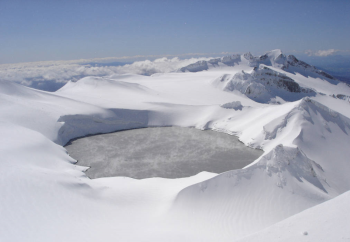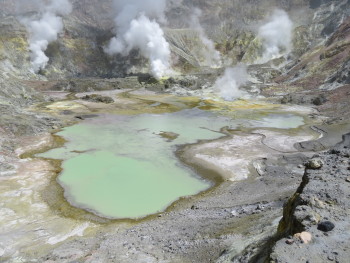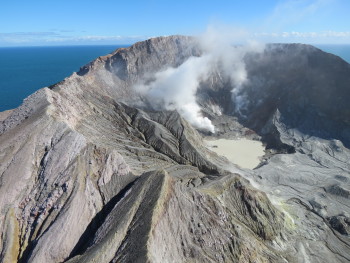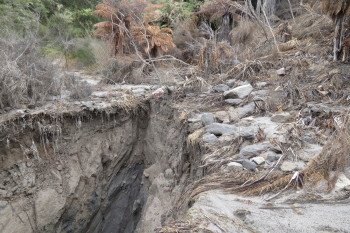
2017 a quiet year for the New Zealand volcanoes
2017 was marked by no eruptions from any of the active volcanoes in New Zealand; however we did see some volcanic unrest. It is not unusual for an active volcano to show signs of unrest and not follow through with an eruption.
The award for our most restless volcano goes to Mt Ruapehu for 2017. This was portrayed by an increase in volcanic gas emissions and sustained high lake temperature starting in November and continuing through to December. High levels of Carbon Dioxide (CO2), Sulphur Dioxide (SO2) and Hydrogen Sulphide (H2S) were measured from the Crater Lake (Te Wai Ā-Moe). The CO2 emission rate on 23 November was 2290 tonnes/day, one of the largest values recorded in recent years. The lake temperature ranged 36-38° C, which is near the top of its usual range and was sustained for over 3 months. Volcanic tremor was also present.
The behavior of Ruapehu - higher than usual temperatures and high gas fluxes - is common in an open vent situation and this has been observed in the past outside of eruptive periods. Volcano seismic tremor is also common during this form of volcanic unrest.
White Island (Whakaari), as always, shows signs of volcanic unrest. These include high temperature fumaroles emitting large volumes of volcanic gas, boiling springs, volcanic tremor and ground deformation. The Crater Lake has not been re-established on the floor of the active crater (it was removed in April 2016 by an explosive eruption). The Te Maari craters on the north side of Tongariro continue to emit volcanic gas and remain very hot, but are slowly cooling now being 262 ˚C (compared to 309 ˚C last year). Ngauruhoe, Raoul and Taranaki compete for being our quietest cone volcanoes. Our only active volcanic field, Auckland, was also quiet.
The caldera volcanoes (Okataina and Taupo) also remained relatively quiet; however these large volcanoes are always up to something. Following the May 2016 hydrothermal eruptions from the Mud Rift at Waimangu, nearby Inferno Crater has not settled back into a normal routine. The water level of this feature usually ranges from overflow to 6-7 m below overflow over 5-6 weeks. This last year has seen missed overflows and ‘high stands’ when the water level doesn’t recede. Not to be outdone Taupo has also had a prolonged earthquake swarm just outside its southern boundary at Kuharua.



